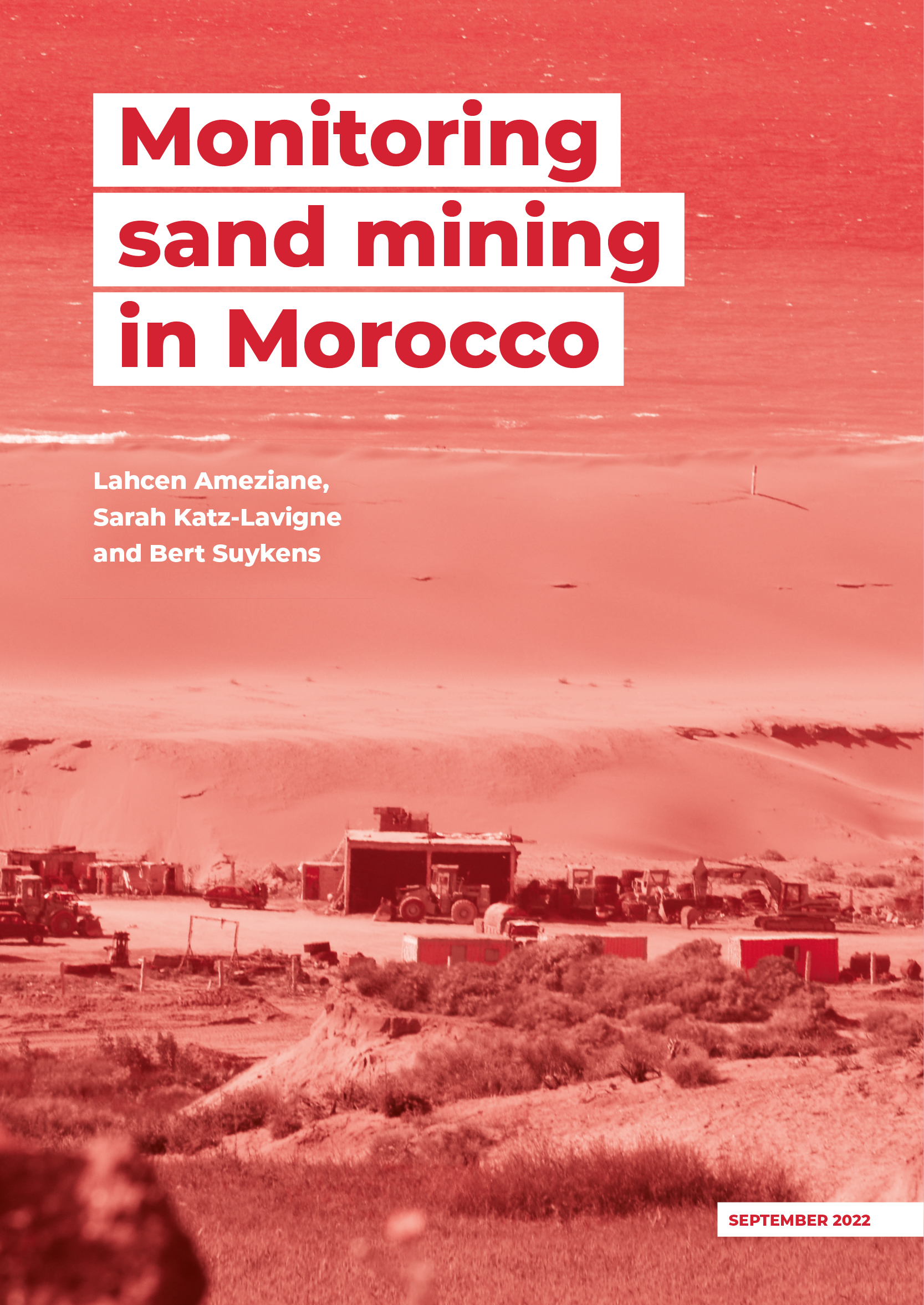Monitoring sand mining in Morocco
This report presents the findings of fieldwork on coastal sand extraction in Morocco. Morocco’s marine shores extend 3,500 km along the Mediterranean Sea and western shore of the Atlantic Ocean; most of the sand supply is of coastal origin. Total annual extraction, based on cement consumption figures, is about 10 million cubic metres, half of which is of “illegal” origin. This report and the case study depart to some extent from most accounts of sand min- ing in Morocco (Journal l’Economiste, 2005; ARTE television documentary, 2019) – which stress unchecked illegal beach sand mining run by syndicates and mafias – by focusing on legal extraction on private land. These quarries started to operate at least partially as a response to the closure of most extraction sand mining sites operating on communal lands in the same area. The report thus offers insights into the phenomena of sand exploitation in Morocco, particularly sand extraction in the littoral area at Chelihate in Kenitra. First, we present the methodology applied in this research and the tools used to gather data, which allowed us to get an overview of the geographical and administrative characteristics of the area, the historical evolution of the juridical texts governing this activity, and its political economy. Second, we have analysed and interpreted data by mapping the stakeholders involved in these activities with their assets and stakes, according to the place they occupy in the process of extraction. Finally, we point out the monitoring gaps in this activity and suggest some recommendations to improve the process of administrative monitoring and drafting of laws, which began recently with the implementation of a new legislative text.




